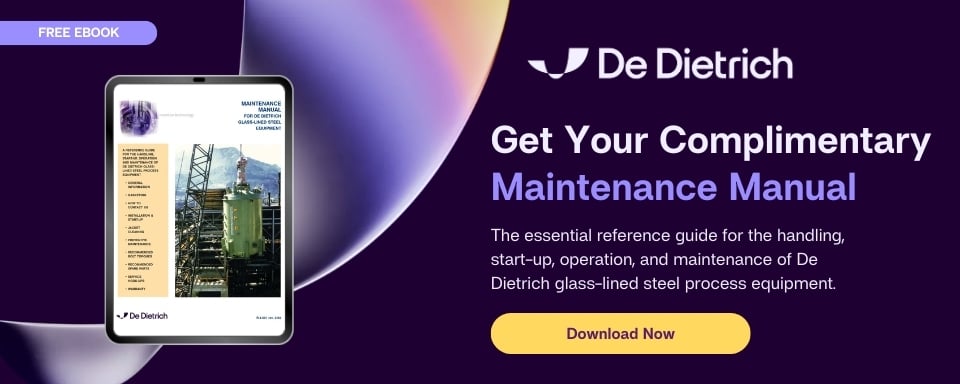12 Critical Do's and Don'ts for Glass-Lined Equipment (Part 1)

Editor’s Note: This post was originally published in May 2013 and has been updated for accuracy, clarity, and to reflect the latest information.
For more than 50 years, glass-lined equipment has proven to be a reliable workhorse in some of the most demanding chemical processing environments. Its near-universal chemical resistance and durable construction can give vessels a service life spanning decades. However, even the most rugged equipment can fail prematurely—often due to avoidable user error.
In this post, we’ll highlight common mistakes and the best practices to follow so you can protect your investment, improve safety, and extend the life of your glass-lined assets.
1. Use the Right Tools to Prevent Damage
Do not use glass or metal tools during operation or maintenance.
Even seemingly minor contact with metal or glass tools can damage the vessel’s interior. Whether you’re scraping product buildup, cleaning the bottom outlet nozzle, or taking samples through the manway, always use non-abrasive tools made from plastic or PTFE. This simple switch can prevent costly surface damage.
2. Inspect New Equipment Immediately Upon Delivery
Do not assume equipment arrives in perfect condition
While we follow strict guidelines for packaging and shipping, transit-related damage—though rare—can still occur. Always inspect both the interior and exterior of your equipment upon delivery. Report any damage immediately to ensure a prompt resolution. This tip applies to every shipment, regardless of the manufacturer.
3. Operate Within Design Limitations
Do not exceed your vessel's design conditions
Every vessel is manufactured with specific design parameters, including pressure and temperature limits, which are listed on the nameplate. Exceeding these can compromise the vessel’s integrity and pose serious safety risks. If your process requires non-standard conditions, speak with us about custom solutions that go beyond typical design specs.
4. Practice Proper Entry Protocol
Do not enter or lean over a vessel with loose items in your pockets
Before entering a vessel for inspection, ensure you’ve removed metal items like coins, keys, pens, jewelry, or tools. Even small objects can cause scratches or chips to the glass lining. Footwear matters too—avoid wearing shoes that have been used outdoors, as debris in the soles can easily damage the surface.
5. Keep the Nameplate Visible and Intact
Do not paint over, insulate, or remove the nameplate
The vessel nameplate includes critical information such as serial number, capacity, pressure/temperature ratings, and type of glass lining. It must remain legible for maintenance, insurance, and regulatory purposes. If the nameplate becomes damaged or obscured, contact us for a replacement—but keeping it visible and protected is always the better option.
6. Never Weld on a Glass-Lined Vessel
Do not weld anything to the vessel's exterior or interior surfaces
Welding introduces extreme heat that can cause thermal shock, leading to cracks or spalling in the glass lining. If you need to modify your equipment—such as adding nozzles or supports—these changes should be made during reglassing by qualified professionals.
Protect Your Equipment and Your Process
By following these best practices, you can avoid premature damage, costly repairs, and unnecessary downtime. For even more in-depth guidance, be sure to download our free resource Installation and Maintenance Manual for De Dietrich Glass-Lined Steel Equipment.
For more information, read part 2 of our post, containing additional tips to keep your glass-lined equipment operating at peak performance.
